
Purchase Tickets
Asian Businesses of Monument Circle, 1918-1948
June 3, 2024
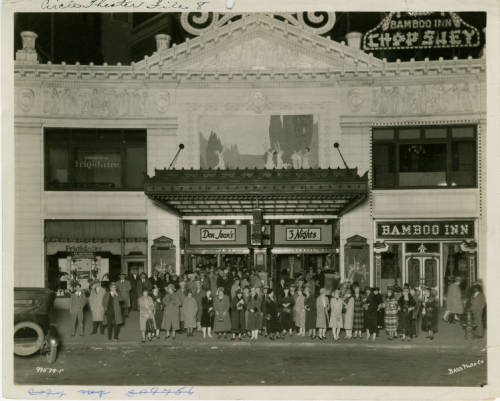
From 1892 until 1948, Monument Circle supported several Asian businesses: a Japanese master jeweler and artisan, Chinese American restaurants, and a rug and fine furnishing store owned by a Syrian immigrant. This blog is a guide to some of our city’s earliest Asian entrepreneurial pioneers.
Indianapolis, although a major U.S. city, does not have a historical, ethnically defined business corridor, such as a Chinatown, Little Italy or otherwise. Because these areas do not presently exist, it does not mean that these communities never existed. During this time period of American history, a series of anti-Asian laws stymied the potential growth of these communities. However, there were legal caveats that allowed a low quota of immigrants.
Ikko Matsumoto Manufacturer Jeweler: 1892 – 1935
1892 -1896: Matsumoto & Dyer, 26 Old Sentinel Building, Circle Drive or Monument Place
Ikko Matsumoto was a Japanese immigrant who came to Indianapolis in 1892. He was a jewelry manufacturer, known for watch repair and manufacturing gold and silver jewelry and novelties. Ikko went into partnership with George G. Dyer who was known as the “Tiffany of Indianapolis”. They worked domestically and internationally. Ikko’s silver design masterwork was sought as far as Chihuahua, Mexico. His first business was in the Old Sentinel Building on the circle.
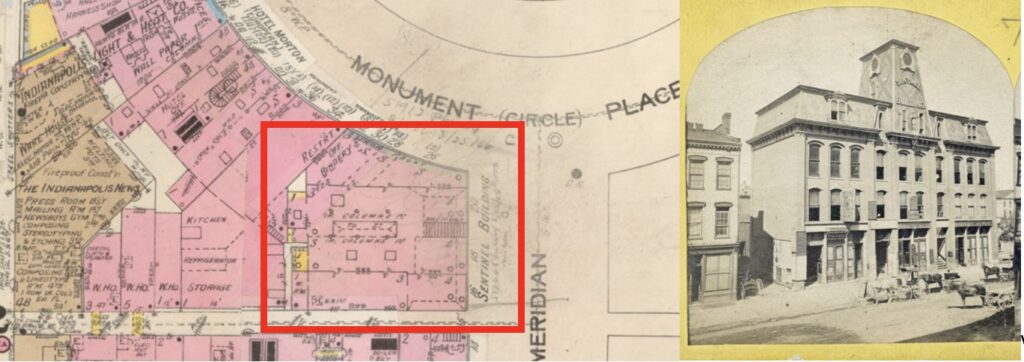
[cropped] Sanborn Map #6, 1898, Indianapolis Sanborn Map and Baists Atlas Collection
Sentinel Building, 1873, Bicentennial Collection, Indianapolis Historical Society
1896 – 1906/7: 17 ½ S. Meridian Street
He and George dissolved their partnership and George went into business with his son. Both Ikko and George had their businesses on S. Meridian Street, steps away from Monument Circle. In 1901 Ikko received a patent of protection for his design work for the Benevolent and Protective Order of the Elks (BPOE). Locally his work was frequently sought after by the Freemasons and other fraternal organizations. In 1904 he was commissioned by Indianapolis’s “Chinese Mayor” Moy Kee to produce a commemorative gold badge for China’s Prince Pu Lun. It was presented to the Prince during his Indianapolis visit. The gold badge was in the shape of an American flag with a carved Chinese dragon, featuring two rubies for the eyes and a two-carat diamond in its mouth.
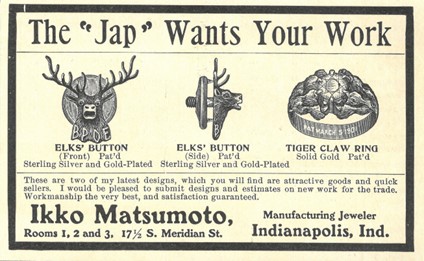
Advertisement, 1901, Indiana Historical Society
1906/7 – 1935: American Central Life Insurance Building (now 111 Monument Circle)
Located at E. Market and Monument Circle, this was the last business residence for Ikko until his death. In 1911 his artisan masterwork work was exhibited at the John Herron Art Institute (now The Indianapolis Museum of Art at Newfields). It was several cloisonne enamel vases and step by step models of its manufacturing process. By 1930 he was highly regarded as a master craftsman, engraver, and watchmaker, with some of Indianapolis notables and their families as clients. He passed away in 1935.

Advertisement, circa 1907, Indiana Historical Society
The Bamboo Inn, 1918 – 1961
1918 – 1946: 39 Monument Circle, Circle Theatre Building
During the Era of the Chinese Exclusion Act (1882), there were caveats that would allow a small number of Chinese nationals into the United States, such as merchants, teachers, students, travelers, and diplomats. However, in 1915, because of a court case, Chinese restaurant owners were able to bypass foreign labor restrictions and hire Chinese restaurant workers with a special merchant visa. This diverted many immigrants into the restaurant industry, causing a national boom of Chinese restaurants. In 1918 in Indianapolis the Bamboo Inn opened in the Circle Theatre building. The original owners dissolved their partnership in 1919 and the Teun Hip Wey Association of Chicago took ownership. These associations were formed to pool the necessary funds to open large banquet style high-end restaurants with start-up fees ranging from $90,000 – $150,000 (presently 2-3 million dollars). The special visa came with a lot of requirements that were to be kept by the owners. One was that two white witnesses had to vouch for the restaurant owner’s credibility. The owner had to maintain a high-grade restaurant full time; hence their advertisements beckoning would-be patrons to inspect the cleanliness of their kitchen at any time. In 1932, the second floor was rebranded as an evening entertainment venue called, Club Orientale, closing in 1933. The Bamboo Inn remained in the Circle Theatre Building until their lease ran out in 1946.

Circle Theatre Building, 1926
W.H. Bass Photo Collection, Indiana Historical Society
1946 – 1948: English Hotel Building
From 1946 until its demolition in 1948, the Bamboo Inn relocated to the southwest quadrant of the Circle in the English Hotel. They would not be the first Asian business in this famed building. In 1948 the hotel was demolished, and they moved to 138 N. Meridian Street and later 2133 N. Meridian Street. Henry Guy Chung, an original member of the Teun Hip Wey Association sold the restaurant in 1961, which was then rebranded as Jong Mea and closed in 1998.
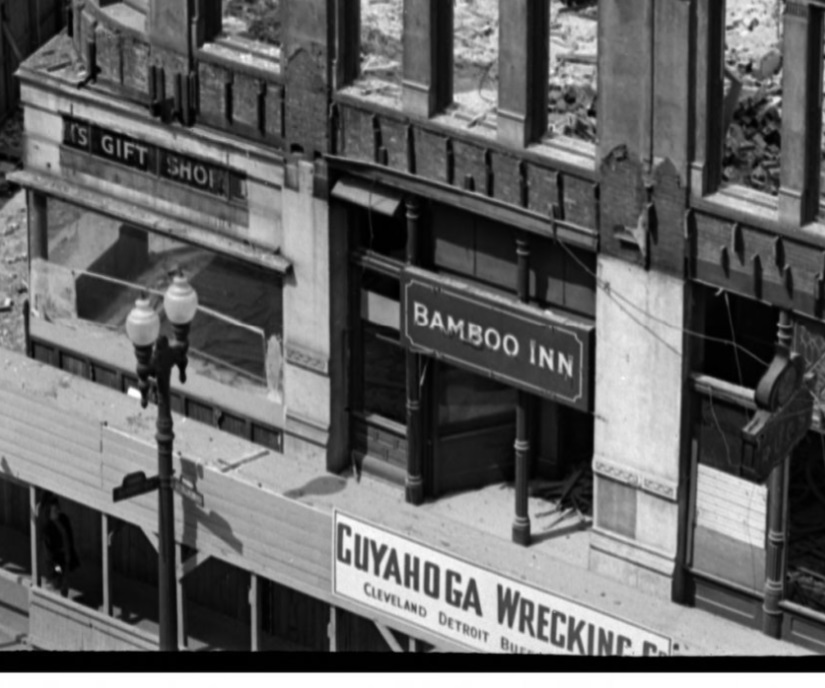
[Cropped] Demolition of the English Hotel, 1948, W.H. Bass Photo Company Collection, Indiana Historical Society
The Circle Café, 1920-1922
31 Monument Place, The Baldwin Building
Managed by William H. Moy, The Circle Café at 31 Monument Place opened to the public on April 17, 1919, a few doors south of the Bamboo Inn. The night before their public opening, there was a celebration with Indianapolis notables who were entertained by Miss Dong Fong Gue and Harry Haw, Chinese singers who were performing at B. F. Keith’s Grand Opera House (115 N. Pennsylvania Street). The following year on March 21, 1920, management changed to F.D. Moy, an investor and stockholder of the Circle Café. In 1922, the business closed due to the loss of $50 (presently $795) a day. Walter R. Beard was appointed as its receiver to handle the foreclosure of this business.
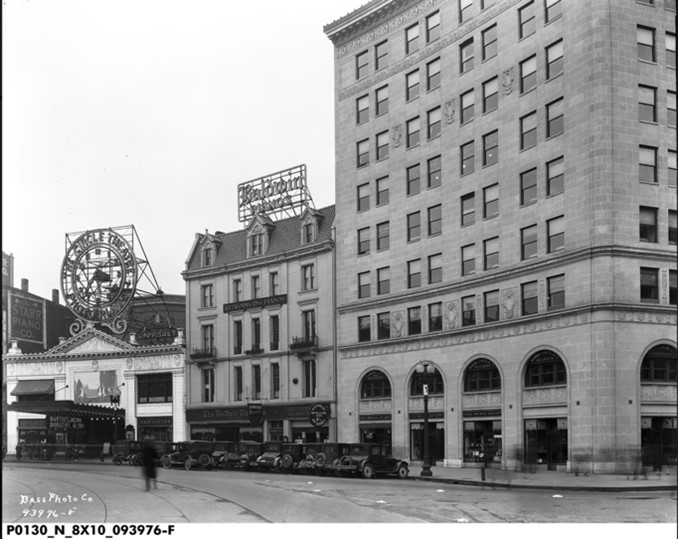
[Baldwin Building in the center] Buildings in the southeast quadrant of the circle, 1925, W.H. Bass Photo Company Collection, Indiana Historical Society

Indianapolis Star, May 18, 1919
Shanghai Tea Garden 1925-1926
128 N. Meridian Street, English Hotel
On August 6, 1925, the Shanghai Tea Garden restaurant opened to the public. It was managed by Lew Wing, formerly of the Bamboo Inn and King Lem Inn of Terre Haute. Like all other Chinese American restaurants on Monument Circle, they also had resident musicians called Shanghai Orchestra. Over $20,000 (presently $318,000) was spent remodeling the 250-seat café. In its short tenure, there was no lack of newspaper advertisements. Their advertisements noted that it was a “cool place to dine” and competitive and affordably priced lunch and dinner specials for 55 cents and one dollar. It hosted special events for Thanksgiving and New Year’s Eve. According to newspaper reports, Lew hosted the Chinese community for a New Year celebration on February 13, 1926, lasting until 2 am. By spring, the restaurant was in financial trouble, the Continental National Bank placed a notice in the newspaper asking for a receiver. On May 21, 1926, Victor L. Wright was appointed as receiver for Shanghai Garden. Afterward, there was no further record of this restaurant.
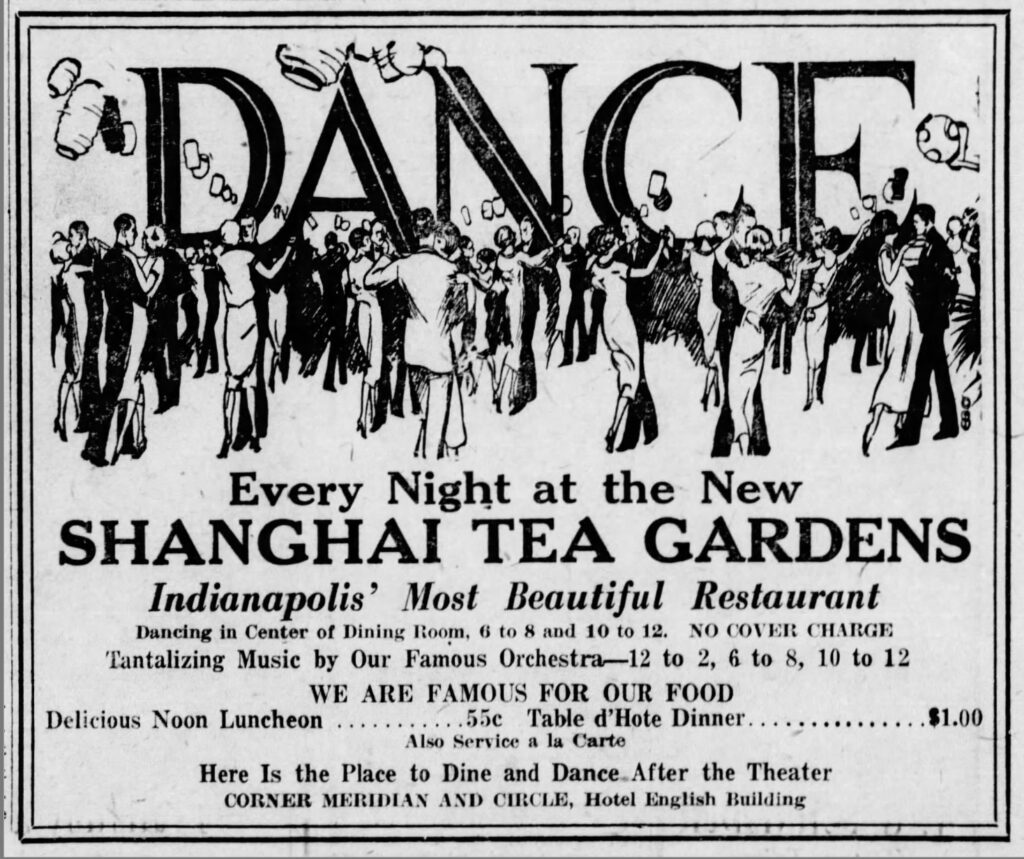
Indianapolis Star, November 18, 1925
Nicholas Shaheen’s House of Quality 1925 – 1930
45 Monument Circle, Circle Theatre Building
Nicholas Shaheen, a Syrian immigrant, settled in Indianapolis in 1912. He began his rug business in 1925 with the first location at 2204 N. Meridian Street. His shop specialized in fine Italian linens, lace, royal sarouk rugs, and lamps. By 1929, his “House of Quality” relocated to 45 Monument Circle in The Circle Theatre Building. By 1929 his ads indicated that his business expanded to additional locations in New York City (220 5th Avenue) and the Oliver Hotel in South Bend. Nicholas began to downsize his South Bend inventory in February of 1930. Months later in June, he began to clear out his inventory at his remaining location at The Circle Theatre.
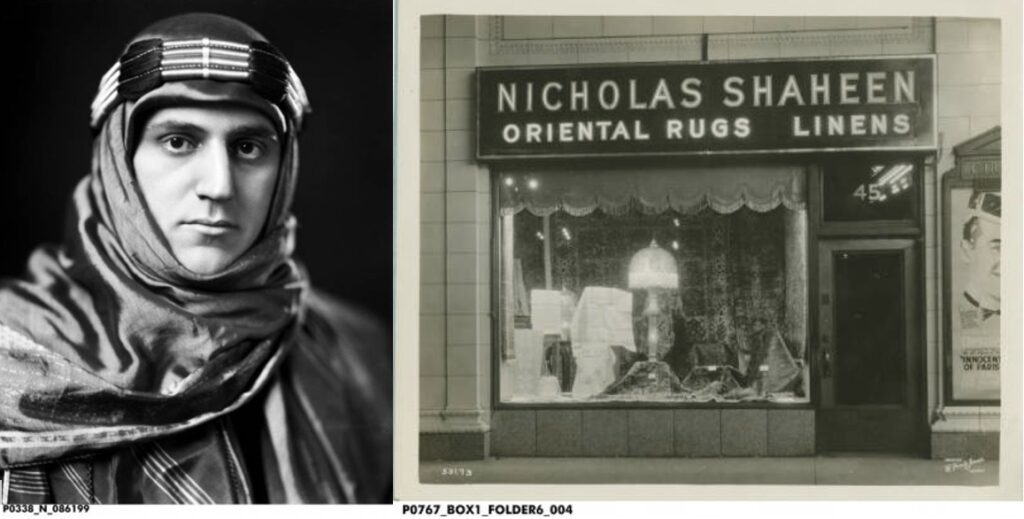
Nicholas Shaheen, March 13, 1930, Bretzman Photographic Collection
Nicholas Shaheen Rug Sign, Staley Signs, Inc. Collection 1920-1980
Indiana Historical Society








